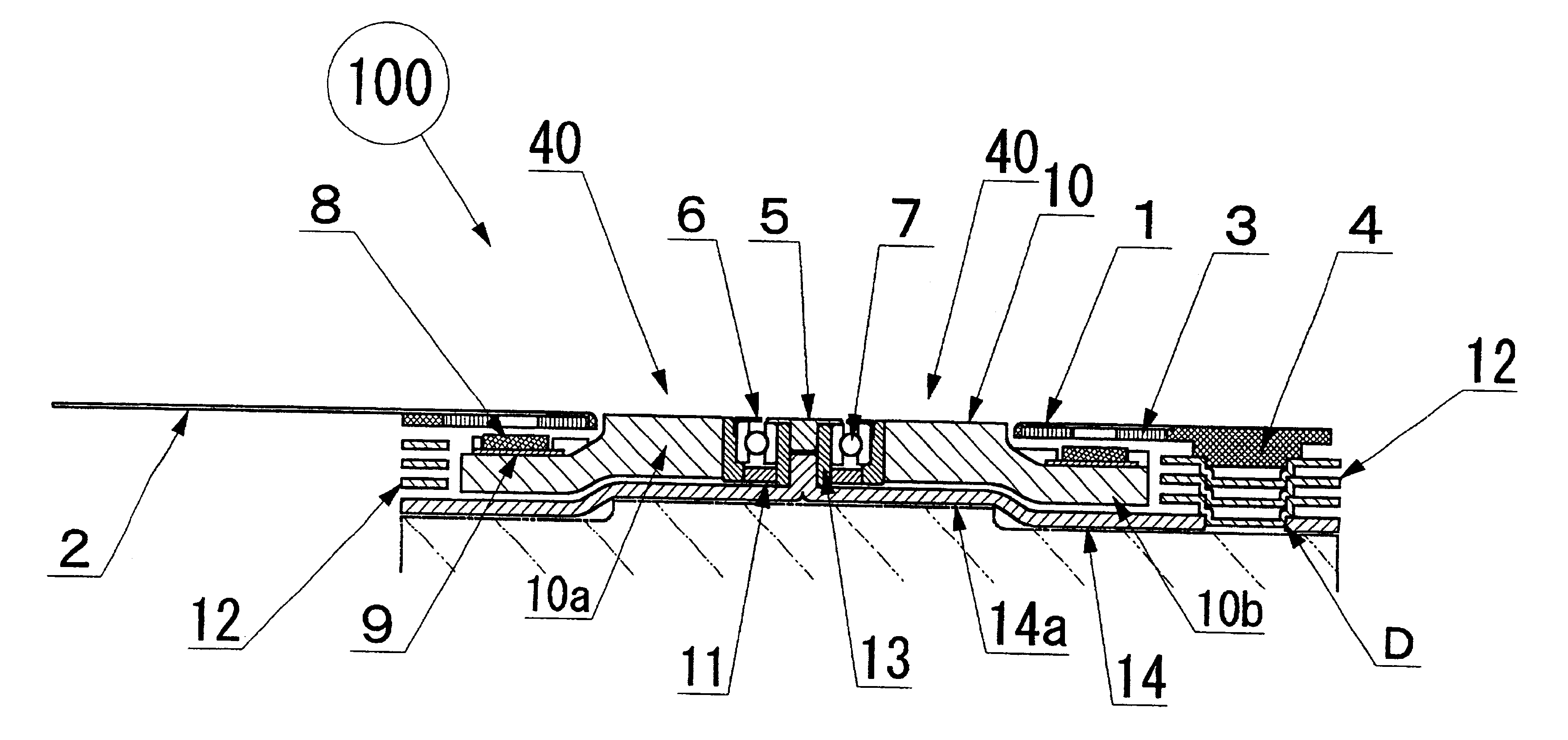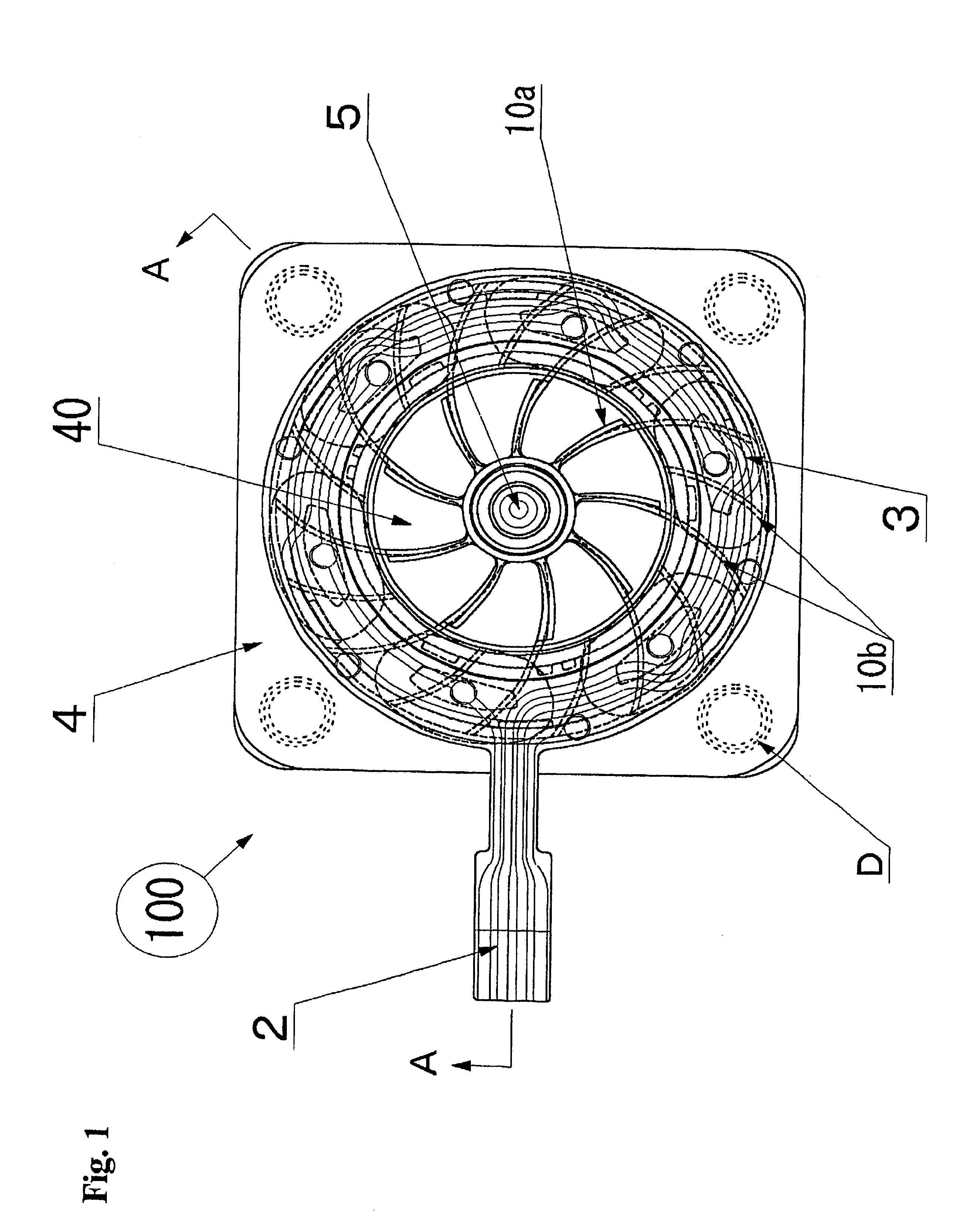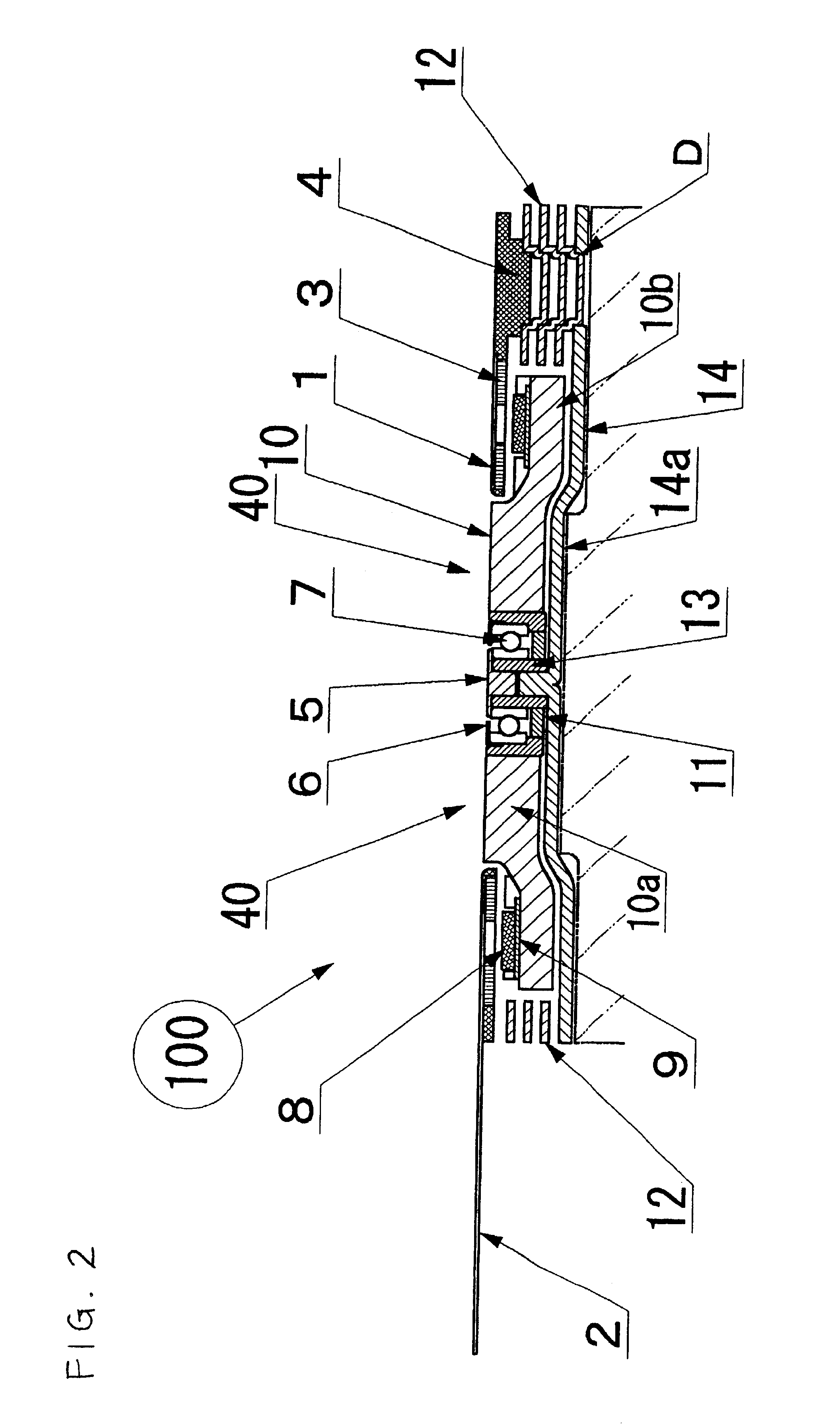Very thin fan motor with attached heat sink
a fan motor and heat sink technology, applied in the direction of piston pumps, magnetic circuit rotating parts, magnetic circuit shapes/forms/construction, etc., can solve the problems of increasing the volume of heat per unit time, increasing the heat density of electronic circuits and internal elements such as semiconductors, and further downsizing this portable equipment. , to achieve the effect of stable processing speed, high performance and rapid improvement performan
- Summary
- Abstract
- Description
- Claims
- Application Information
AI Technical Summary
Benefits of technology
Problems solved by technology
Method used
Image
Examples
Embodiment Construction
The very thin fan motor with heat sink attached 100 of this invention is explained below with reference to FIGS. 1 through 4. FIG. 1 (which differs from the actual outward appearance in order to explain the internal structure) and figure are a conceptual plane view and cross section showing the structure of the thin fan motor. FIG. 3 is an exploded oblique view showing the constitution of parts of the fan motor as a whole, and FIG. 4 is a conceptual plane view showing the flat motor fan with rotating blades that incorporate magnets.
The basic structure of the very thin fan motor 100 of this invention is shown in FIGS. 1 through 3. It comprises three major units; these are the heat sink unit for cooling by radiation of heat, that has a metal heat plate 14 mounted directly on the CPU and heat radiation fins 12 held together by connectors D, a rotor fan 10 unit in which a shaft 13 is supported and the rotor fan 10 is free to turn on ball bearings 7 in the center of the heat plate 14, an...
PUM
 Login to View More
Login to View More Abstract
Description
Claims
Application Information
 Login to View More
Login to View More - R&D
- Intellectual Property
- Life Sciences
- Materials
- Tech Scout
- Unparalleled Data Quality
- Higher Quality Content
- 60% Fewer Hallucinations
Browse by: Latest US Patents, China's latest patents, Technical Efficacy Thesaurus, Application Domain, Technology Topic, Popular Technical Reports.
© 2025 PatSnap. All rights reserved.Legal|Privacy policy|Modern Slavery Act Transparency Statement|Sitemap|About US| Contact US: help@patsnap.com



